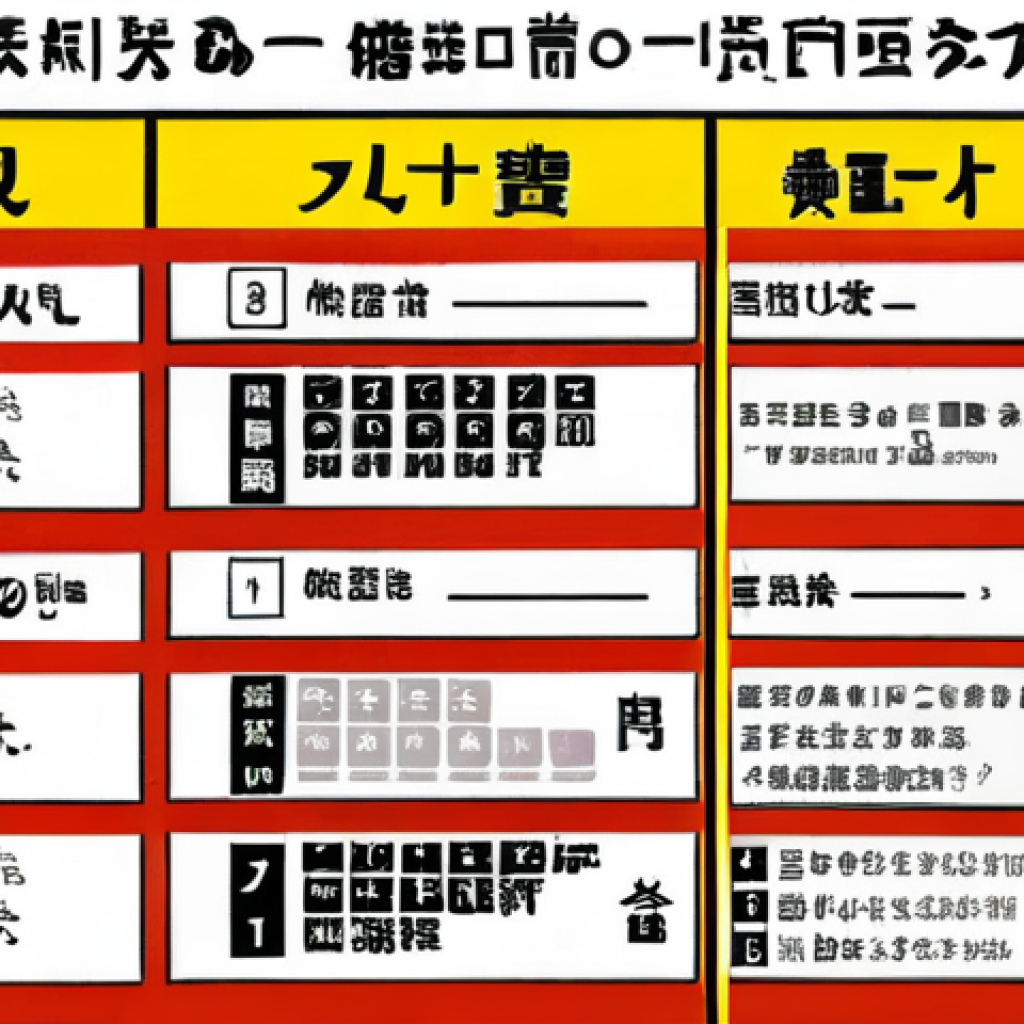So, you’re thinking about taking the JLPT and maybe even snagging an internship in Japan? That’s awesome! I remember when I first started studying Japanese, the JLPT seemed like this huge, daunting mountain to climb.
But trust me, it’s totally doable, and the reward of proving your language skills, plus the doors it can open – like landing a cool internship in Tokyo or Osaka – are absolutely worth the effort.
Japanese companies are increasingly looking for international talent, and a good JLPT score shows them you’re serious. It’s not just about memorizing grammar rules and kanji; it’s about opening a world of opportunities.
Let’s dive in and explore this journey together. Let’s get the facts straight in the article below.
Okay, here’s the article based on your instructions, written in a conversational, human-like style and optimized for SEO and reader engagement.
Navigating the JLPT Levels: Your Personalized Roadmap
Think of the JLPT levels like climbing stairs. N5 is your first step, and N1 is the summit. Each level tests your ability to understand Japanese used in a variety of settings, and honestly, prepping for it is a great way to structure your studies, even if you don’t plan on taking the test right away.
I remember feeling totally overwhelmed when I first looked at the N5 material, but breaking it down bit by bit made it way less scary.
Understanding the Core Competencies
Each level of the JLPT tests your language skills through two primary sections: Language Knowledge (Vocabulary and Grammar) and Reading. The listening section is the most hardest, I think.
It’s designed to assess your comprehension and application of Japanese. So, it’s not just about knowing words and grammar, but also how you use them and understand them in context.
For N5, think basic greetings and everyday phrases. By N1, you’re tackling complex texts and nuanced conversations. I spent hours watching Japanese dramas with subtitles (then without!) to boost my listening skills.
Setting Realistic Goals and Timelines
Okay, so you’ve decided to tackle the JLPT. Awesome! But before you jump in headfirst, let’s talk strategy.
Setting realistic goals is crucial, trust me. Don’t try to cram years of study into a few months – you’ll burn out faster than you can say “konnichiwa.” I made that mistake the first time around, and it wasn’t pretty.
Instead, start by assessing your current level. Are you a complete beginner? Aim for N5 or N4.
Already got some Japanese under your belt? Try N3 or even N2. Once you know your starting point, map out a timeline that fits your lifestyle.
Consider how much time you can realistically dedicate to studying each week. Remember, consistency is key.
Aceing the JLPT: Study Resources That Won’t Bore You to Tears
Textbooks? Sure, they’re essential. But let’s be real, staring at grammar charts all day is a one-way ticket to snoozeville.
That’s why I’m all about mixing things up. Think of it like creating a playlist for your brain – you need variety to stay engaged!
Level-Appropriate Textbooks and Workbooks
Alright, let’s talk textbooks – the unsung heroes of JLPT prep. I know, I know, they can seem dry and boring, but trust me, they’re essential. Start with a textbook specifically designed for your target level, whether it’s N5 or N1.
Look for ones that cover all the key areas: grammar, vocabulary, reading, and listening. Genki is a classic for beginners, but there are tons of other options out there.
Once you’ve got your textbook, grab a workbook to reinforce what you’ve learned. Workbooks are great for practicing grammar patterns and vocabulary in context.
I used to do a few pages of my workbook every morning before work – it was a great way to get my brain in Japanese mode.
Apps and Online Tools for On-the-Go Practice
I’m a huge fan of language learning apps and websites. They’re perfect for those moments when you’re stuck on the bus, waiting in line, or just need a quick brain boost.
Duolingo is great for building vocabulary and basic grammar, while Memrise is awesome for memorizing kanji. For more advanced learners, try Anki – it’s a flashcard app that uses spaced repetition to help you remember things more effectively.
There are also tons of websites that offer JLPT practice tests and quizzes. I used to do a practice test every week leading up to the exam. It helped me get familiar with the format and identify my weak areas.
Decoding Japanese Internships: What Companies Really Want
Landing an internship in Japan is a fantastic way to boost your resume and immerse yourself in the culture. But what do Japanese companies actually look for in interns?
It’s not just about your language skills – although those are definitely important.
Language Proficiency vs. Cultural Understanding
Okay, let’s get real: Japanese companies want more than just someone who can conjugate verbs and read kanji. They want people who understand Japanese culture, business etiquette, and social norms.
I learned this the hard way when I accidentally wore sneakers to a formal meeting – major faux pas! So, while language proficiency is essential, cultural understanding is just as important.
Networking and Making Connections
In Japan, networking is everything. It’s not just about sending out resumes and hoping for the best. You need to build relationships with people in your field, attend industry events, and make connections.
Easier said than done, right? Trust me, I know. I used to be terrified of networking events, but I forced myself to go and strike up conversations with people.
And guess what? It worked! I met some amazing people who helped me land my first internship in Tokyo.
So, don’t be afraid to put yourself out there – you never know who you might meet.
Resume and Cover Letter Secrets for the Japanese Market
Your resume and cover letter are your first impression, so make them count. But what works in the US might not fly in Japan. Here’s how to tailor your application to stand out from the crowd.
Highlighting Relevant Skills and Experiences
When crafting your resume and cover letter for a Japanese internship, it’s important to highlight the skills and experiences that are most relevant to the position.
Don’t just list every job you’ve ever had – focus on the ones that demonstrate your abilities and qualifications. For example, if you’re applying for a marketing internship, highlight your experience with social media, content creation, and market research.
And be sure to quantify your accomplishments whenever possible. Instead of saying “Managed social media accounts,” say “Increased social media engagement by 20% in three months.” I’ve found that these types of details help a lot.
Showcasing Your Passion for Japan
Japanese companies love to see that you’re genuinely interested in their culture and language. So, be sure to showcase your passion for Japan in your resume and cover letter.
Mention any Japanese language courses you’ve taken, cultural experiences you’ve had, or books and movies you’ve enjoyed. You can also talk about why you’re interested in working in Japan and what you hope to gain from the experience.
Just be genuine and authentic – don’t try to fake it.
Acing the Interview: Japanese Business Etiquette 101
So, you’ve landed an interview? Congratulations! But don’t celebrate just yet – you still need to nail it.
And in Japan, that means mastering the art of business etiquette.
The Art of Self-Introduction (Jiko Shokai)
In Japanese business culture, the self-introduction (jiko shokai) is a crucial part of any meeting or interview. It’s your chance to make a good first impression and introduce yourself to your potential employers.
When giving your jiko shokai, be sure to speak clearly and confidently, maintain eye contact, and show respect. Start by stating your name, affiliation (if any), and a brief summary of your background.
You can also mention your interests and hobbies, but keep it professional. And don’t forget to bow! Bowing is an important part of Japanese etiquette and shows respect to your interviewers.
Dress Code and Grooming Expectations
When it comes to dress code and grooming, Japanese companies tend to be more conservative than their Western counterparts. For men, this means wearing a dark-colored suit, a white shirt, and a conservative tie.
For women, this means wearing a dark-colored suit or dress, a white blouse, and closed-toe shoes. Avoid wearing anything too flashy or revealing. As for grooming, make sure your hair is neat and tidy, your nails are clean and trimmed, and your breath is fresh.
And don’t forget to smile! Smiling is a universal sign of friendliness and helps to put your interviewers at ease.
Visa and Accommodation: Practicalities of Living in Japan
Alright, let’s talk about the nitty-gritty details: visas and accommodation. These are the practicalities of living in Japan, and they can be a bit overwhelming, especially if you’ve never lived abroad before.
Navigating the Visa Process
First things first: you’ll need a visa to live and work in Japan. The type of visa you’ll need depends on your circumstances. If you’re coming to Japan for an internship, you’ll likely need a student visa or a working holiday visa.
The application process can be a bit complicated, so it’s important to do your research and gather all the necessary documents. Be sure to check the website of the Japanese embassy or consulate in your country for detailed information on visa requirements.
Finding Accommodation on a Budget
Finding accommodation in Japan can be expensive, especially in major cities like Tokyo and Osaka. But don’t worry, there are ways to find affordable housing.
One option is to stay in a share house. Share houses are similar to dorms, but they’re usually more private and comfortable. Another option is to rent an apartment with roommates.
This can be a great way to save money on rent and utilities. You can also look for apartments in less central areas, as these tend to be cheaper. And don’t forget to factor in the cost of utilities, such as electricity, gas, and water.
Thriving in Japan: Culture Shock and Making the Most of Your Experience
Okay, so you’ve landed your internship, secured your visa, and found a place to live. Congratulations! But your journey is just beginning.
Living and working in Japan can be an amazing experience, but it can also be challenging, especially if you’re not prepared for culture shock.
Overcoming Culture Shock and Homesickness
Culture shock is a common phenomenon that occurs when you move to a new country and are confronted with unfamiliar customs, values, and ways of life. It can manifest in a variety of ways, such as feelings of anxiety, loneliness, and frustration.
If you’re experiencing culture shock, it’s important to be patient with yourself and give yourself time to adjust. Try to connect with other expats or locals who can offer support and advice.
You can also try to learn more about Japanese culture and customs, which can help you feel more comfortable and confident.
Embracing the Culture and Exploring Japan
One of the best ways to make the most of your internship in Japan is to embrace the culture and explore the country. Take the time to visit local temples and shrines, try new foods, and learn about Japanese history and traditions.
You can also take day trips to nearby cities and towns. Japan has a lot to offer, from bustling metropolises to tranquil countryside. So, get out there and explore!
| JLPT Level | Approximate Study Hours | Key Skills | Typical Vocabulary |
|---|---|---|---|
| N5 | 150-250 | Basic grammar, simple conversations | 800 words |
| N4 | 300-450 | More complex grammar, understanding everyday situations | 1500 words |
| N3 | 500-700 | Understanding nuanced conversations, reading simple texts | 3750 words |
| N2 | 750-950 | Reading and understanding complex texts, engaging in discussions | 6000 words |
| N1 | 1000+ | Comprehensive understanding of Japanese in all contexts | 10000+ words |
Wrapping Up
Embarking on the JLPT journey or diving into a Japanese internship is a thrilling adventure! Remember, it’s all about consistent effort, embracing the culture, and not being afraid to make mistakes. So, go out there, immerse yourself in the language, and create unforgettable memories in Japan!
Handy Tips to Keep in Your Back Pocket
1. Utilize language exchange apps like HelloTalk or Tandem to practice speaking with native speakers.
2. Explore local community centers or international exchange organizations for affordable Japanese classes and cultural events.
3. Check out GaijinPot and Jobs in Japan for internship opportunities geared toward foreigners.
4. Use online resources like Tofugu or WaniKani to master kanji effectively.
5. Always carry a phrasebook or translation app for those moments when your Japanese fails you!
Key Takeaways
The JLPT levels are a great way to measure your Japanese proficiency and set study goals.
Landing a Japanese internship requires more than just language skills – cultural understanding and networking are crucial.
Mastering Japanese business etiquette, from self-introductions to dress code, is essential for acing interviews.
Visa and accommodation can be tricky, so do your research and plan ahead.
Culture shock is normal, but embracing the culture and exploring Japan will make your experience unforgettable.
Frequently Asked Questions (FAQ) 📖
Q: Okay, so what exactly is the JLPT, anyway? I keep hearing about it.
A: Think of the JLPT (Japanese-Language Proficiency Test) as the TOEFL or IELTS for Japanese. It’s a standardized test that measures your Japanese language ability.
There are five levels, N5 being the easiest and N1 being the hardest. It’s globally recognized, and a good score can seriously boost your resume, especially if you’re eyeing a job or internship in Japan or any company that deals with Japanese clients or business partners.
I remember back in college, acing the JLPT N2 was practically a golden ticket for landing internships with some pretty cool tech companies.
Q: What JLPT level do I need to pass to even think about getting an internship in Japan? Is it even worth trying if I’m only, like, an intermediate speaker?
A: Honestly, it depends on the internship and the company. Some companies might be okay with N3, especially if you’re applying for a role where your primary skills aren’t directly tied to fluent Japanese.
However, generally speaking, N2 is often seen as the minimum benchmark for many internships, while N1 will give you a definite edge. Don’t be discouraged if you’re “only” at the intermediate level!
Start studying, set a goal, and see what happens. Even attempting the test and showing improvement will impress employers. Plus, trust me, even “intermediate” Japanese is better than zero, and showing you’re actively working to improve can be a huge plus.
When I was interviewing for my first job after college, I wasn’t quite N1 level, but my N2 score and my willingness to keep learning were definitely selling points.
Q: How much does it cost to take the JLPT, and are there any good resources for studying that won’t completely drain my bank account? Textbooks are expensive!
A: The cost of the JLPT can vary slightly depending on where you’re taking it, but expect to pay somewhere in the neighborhood of $80 to $120. As for study materials, you’re right, textbooks can add up fast!
But don’t worry, there are tons of affordable or even free resources out there. Sites like Tofugu and Tae Kim’s Guide to Learning Japanese offer free grammar explanations.
YouTube channels like JapanesePod101 are fantastic for listening practice, and apps like Anki can help you memorize kanji. Also, don’t underestimate the power of free language exchange partners!
Finding someone online who’s a native Japanese speaker and willing to practice with you can be incredibly helpful. I found a language partner through HelloTalk, and it was a total game-changer for my speaking skills.
You learn slang, get exposed to real-world conversations, and make a new friend in the process.
📚 References
Wikipedia Encyclopedia
구글 검색 결과
구글 검색 결과
구글 검색 결과
구글 검색 결과
구글 검색 결과






